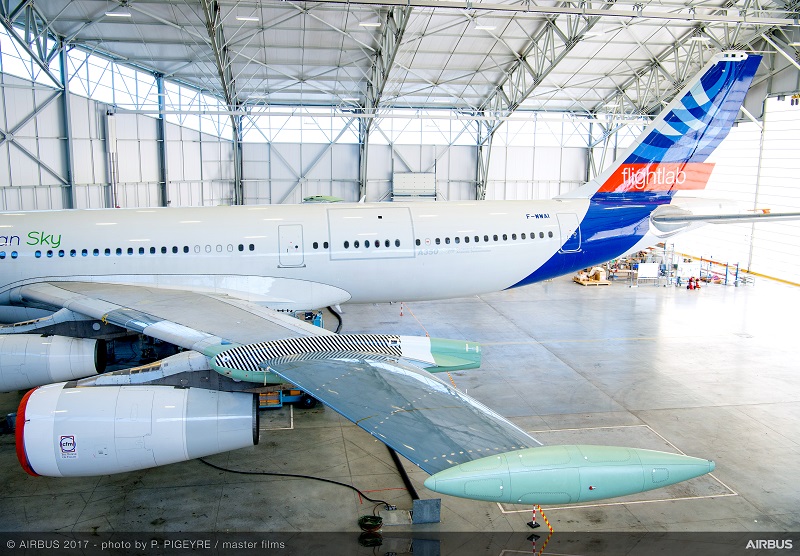The Airbus BLADE project may not have may not have produced the prettiest wing ever designed and it certainly isn’t the work of art gracing the Airbus A350.
But if the Breakthrough Laminar Aircraft Demonstrator in Europe can achieve its aim of reducing wing friction by 50 per cent and carbon dioxide emissions by 5 per cent, it will provide a handy weapon in the fight to reduce aviation’s ecological footprint.
READ: PLane makers face new environmental standards.
Two transonic laminar outer-wings have been attached to Airbus’ A340 Flight Lab in what the manufacturer says is world first and the test aircraft took to the air this week. It will perform around 150 flight hours in the coming months.
Laminar Flow might sound like a name for a progressive rock band but it refers to the state in which a fluid or gas travels smoothly or in regular paths.
On aircraft, this means a smooth airflow over the wings that makes them more aerodynamic and therefore more efficient.
It has been a holy grail of manufacturers but laminar wings have not been used in commercial aviation because the technology up to now was not mature enough and had not been flight tested.
The arrival of new flow simulation tools has given the quest a big boost.
The extensive modifications to the A340-300 test-bed aircraft, which is packed with flight-test instrumentation, were made over the course of 16 months in Tarbes, France, with the support of Airbus industrial partners across Europe.
“We began by opening the flight envelope to check that the aircraft was handling correctly,” said Airbus flight-test engineer Philippe Seve.
“We achieved our objective to fly at the design Mach number, at a reasonable altitude and check everything was fine. We also checked that the flight-test instrumentation) was working as expected, to identify further fine-tuning for the next flights.”
A small team of specially-trained pilots, test engineers and flight test engineers prepared for months prior to the first flight, spending time in a simulator and familiarizing themselves with the flight-test instruments.
Teams from Bremen, Germany and Broughton, UK worked on the outer wings with a team from Stade, Germany, installing infra-red cameras.
Airbus for the first time is using a testing method involving hundreds of points to measure the waviness of the surface to help engineers ascertain its influence on the “laminarity”.
The tests use infrared cameras inside the pod to measure wing temperature, an acoustic generator which measures the influence of acoustics on laminarity and an innovative reflectometry system, which measures overall deformation in real-time during flight.
They aim to be able to measure the tolerances and imperfections which can be present and still sustain laminarity.
“To this end, Airbus will simulate every type of imperfection in a controlled manner, so that at the end of the campaign the tolerances for building a laminar wing will be fully known,’’ the manufacturer said.
























